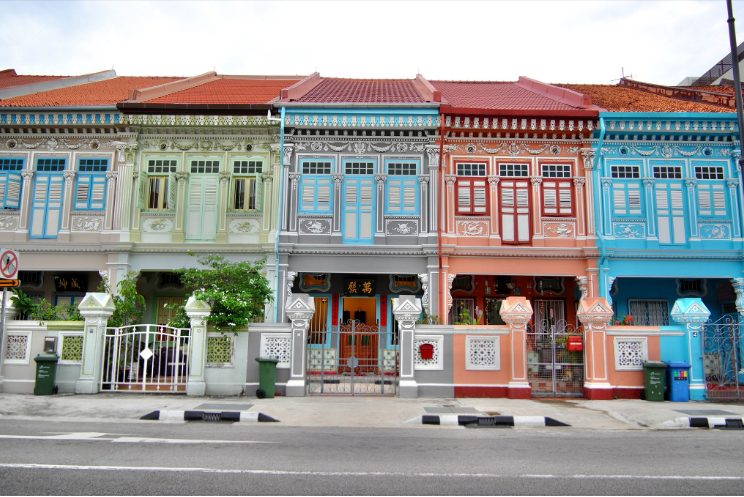Joo Chiat

📷: Kate Branch [WikiCommons]
#Didyouknow that Joo Chiat was designated as Singapore’s first “Heritage Town” in 2011?
Spanning a long history starting from the 1820s, the area (before it was formally named Joo Chiat) had initially comprised coconut and cotton plantations and country houses owned by the wealthy.
Its development as a small town burgeoned in the 1900s to 1920s as people decided to settle there, escaping the overcrowded city centre. These incoming residents consisted of Peranakan and Eurasian populations, as well as Chinese, Malay, and Indian communities -- making the town already a melting pot of cultures and ethnicities in the early days.
This was also when Chew Joo Chiat, who was a wealthy trader from China and whom the area was eventually named after, acquired large swathes of land in the area, which the Chew family eventually sold off for residential and commercial use.
In the 1950s and 60s, modern landmarks such as the Roxy and Odeon cinemas, department stores, as well as cultural-religious landmarks such as the Sri Vinayagar Kalamandapam Temple and the Kuan im Tng Temple were built. Such developments reflected how the area continued to cater residents of varying backgrounds, while also rapidly modernising to suit modern needs and sensibilities.
In 1991, the Urban Redevelopment Authority gazetted 518 buildings in Joo Chiat for conservation -- mainly two-story shophouses and terrace houses. Further enriching the heritage tapestry of Joo Chiat, additional buildings also earned their conservation stripes, including bungalows at various streets such as 25 Chapel Road and 25 Still Road South, St. Hilda’s Church and Bethesda (Katong) Church, which had become prominent landmarks in the area.
That said, Joo Chiat faced difficulties in the early 2000s as an increase in nightlife locations and shady establishments gave it a sleazy reputation. Prostitution, fights, and public drunkenness were also rampant. In a remarkable instance of proactiveness and ownership, residents in the area formed the “Save Joo Chiat Working Group” in 2004. This group lobbied the government for change and implemented community watch initiatives, resulting in the tighter law enforcement in the area and the closure of many bars and massage parlours, leading to a reduction in vice.
Today, Joo Chiat has undergone a remarkable transformation, with art galleries, design studios, and boutique hotels rejuvenating the area, and a diverse culinary scene offering several F&B options suitable for every palette. #ourneighbourhood in Joo Chiat stands for many things that we Singaporeans are proud of -- notable architectural treasures, rich cultural heritage, a variety of ethnic and cultural cuisines, and in more recent times, the desire and can-do attitude to seek change for the better and improve our lives. From its history, Joo Chiat stands proud as a microcosm of our Singapore, and ensures a positive and lasting legacy for generations to come.
#Singapore #ourneighbourhood #joochiat
Visit Facebook and Instagramfor more content.

